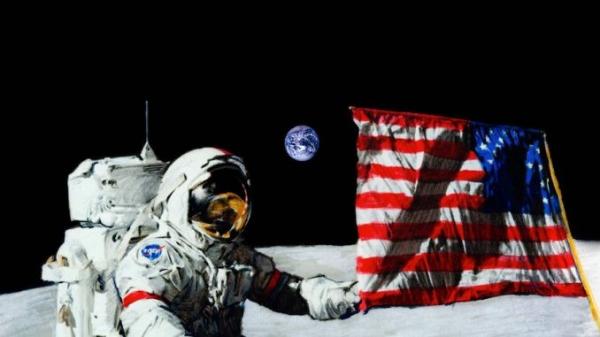难道60年代的登月真的是假?NASA声称美国目前没有技术可以把人送往月球,因为“技术在多年前已被悉数摧毁”
[公孙明按:科学与技术只会日新月异,不会往回头走的!尤其是像NASA这样的一个尖端科研机关。就跟那漏洞百出的911故事一样,难道60年代的登月真的是假?五十年的科技岁月难道也在空转着?]
NASA: We’re No Longer Able To Visit The Moon May 14, 2017Sean Adl-TabatabaiSci/Environment10

NASA hasadmittedthat they no longer have the technology to send humans to the moon, claimingthat it was “destroyed years ago.” According to NASA astronaut Don Pettit, the American space agency don’t have the resources to rebuild the painfully time-consuming technology it would require to send astronauts back up to the moon. Speaking at the Space for Innovation conference at London’s Science Museum, Pettitsays he hopes thatother countries will collaborate and help to makemoon landingspossible again. “International collaboration I believe is essential for space exploration it provides robustness to the technology of exploration,” he said. “Each country has a different means of approaching the same problem and when one countries technology fails you can rely on the other countries technology to get you through that particular issue.” Ibtimes.co.ukreports: “A classic example is with space shuttle Colombia burning up in the atmosphere, space station continued because we relied on Russia’s Soyuz rockets. That’s an example where international aspect of the space station adds a robustness. Where one countries technology fails other countries can pick up the slack and keep the process going.” Unfortunately the cost and politics involved in space travel act as an impediment. “Politics always gets in the way of any high and mighty adventure that also takes the finances of countries – of societies – in order to do,” he said. “Exploring space is expensive. Right now its too expensive for any single country or company to do so you have to work together to make it happen.” 87,289 And this is something the ESA is working towards. Speaking conference, director general Jan Woerner said the agency is looking to open up to partnerships beyond the current 22 member states. “ESA is international organisation,” he said. “We have the possibility to join forces with every state in the world. We have this diverse structure already, we know how to handle outside collaboration. One of the clear understanding to open up to more partnerships, but also to open up to more partnerships in industry.” One mission Pettit is keen on is the ESA’s proposal for a Moon village – a base on the surface of the Moon where scientists can work, while also potentially serving as a launch pad for future missions. “The lunar base is bound to happen – it’s the next logical step,” he said. “I’d go to the moon in a nanosecond. The problem is we don’t have the technology to do that anymore. We used to but we destroyed that technology and it’s a painful process to build it back again.” Nasa is currently working on projects to develop a manned mission to Mars. However, the technology required is still some way off. “Going to Mars should be one of the next series of steps humans do. But the first step should be going back to the moon for a number of technological and exploration reasons. Then after that Mars and then maybe high orbit in Venus atmosphere, maybe to Europa.”
For now, however, manned space travel remains within the confines of the ISS – which is certainly no bad thing. Speaking of the experience of being there, he said: “For me sleeping in a weightless environment is wonderful. You wake up in the morning and you feel 20 years old again. You’re ready to charge off on the day. “It’s wonderful to look at earth from space. I look at it from the eyes of a scientist type where you can see all sorts of geological features. There’s a lot of features on earth that you can’t see if you’re walking on it – you’ve got to step back. It is privileged position. I’ve had the privilege of seeing two total solar eclipses from orbit. I’ve never seen from earth, but from orbit seen two. The amazing thing is you can see the shadow cast from Earth.” Both on the ISS and back on Earth, Pettit has become known for his photography. He is due to release a book of his images later this year. He believes engagement with space exploration has become far greater as a result of being able to share pictures with the public back on Earth. “I love photography whether on or off of Earth. Taking pictures in space presents a wonderful environment to do a range of imagery that captures people’s imagination – because it’s something they haven’t seen before. “Photography plays a central role in sharing the experience of exploration. How much photography do we have from 17th century? Obviously none because it wasn’t invented. But just think what they could have shared in their transoceanic voyages if had photography. It really came into the field of exploration maybe in 1860s and certainly was central to the arctic and Antarctic exploration – sharing what those expeditions were about and the conditions under which people lived. And that is what makes photography central to sharing the experience of space to all the people on the planet.” And it is imagination that will encourage human space exploration of the future: “The only limit to human future is in our own imaginations,” he said. “And our willingness to do something about it.”
|
